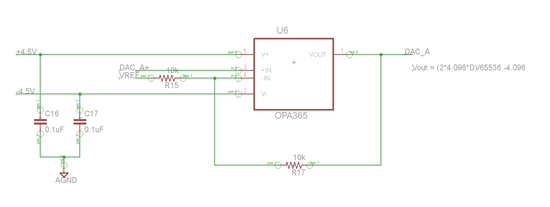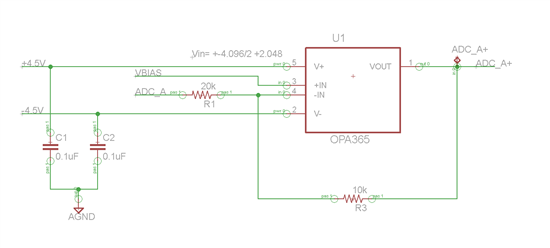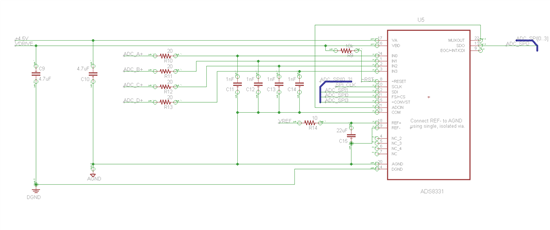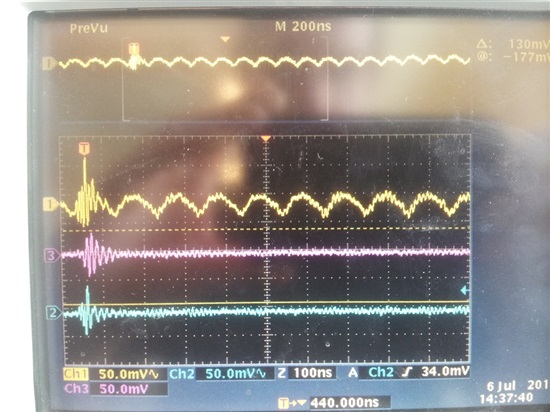Hello,
I am designing a 4 channel ADC/DAC frontend which uses the following chips
- ADC: http://www.ti.com/product/ads8331
- DAC: http://www.analog.com/en/digital-to-analog-converters/da-converters/ad5686/products/product.html
ADC Input buffer. Yellow: ADC_A, Pink: ADC_A+, Blue: Positive supply rail. Please ignore the large, high frequency transient that appears in all three traces. This is the result of a switching power supply that has since been removed from the circuit. I interested in the periodic signal on the ADC_A+ line.






